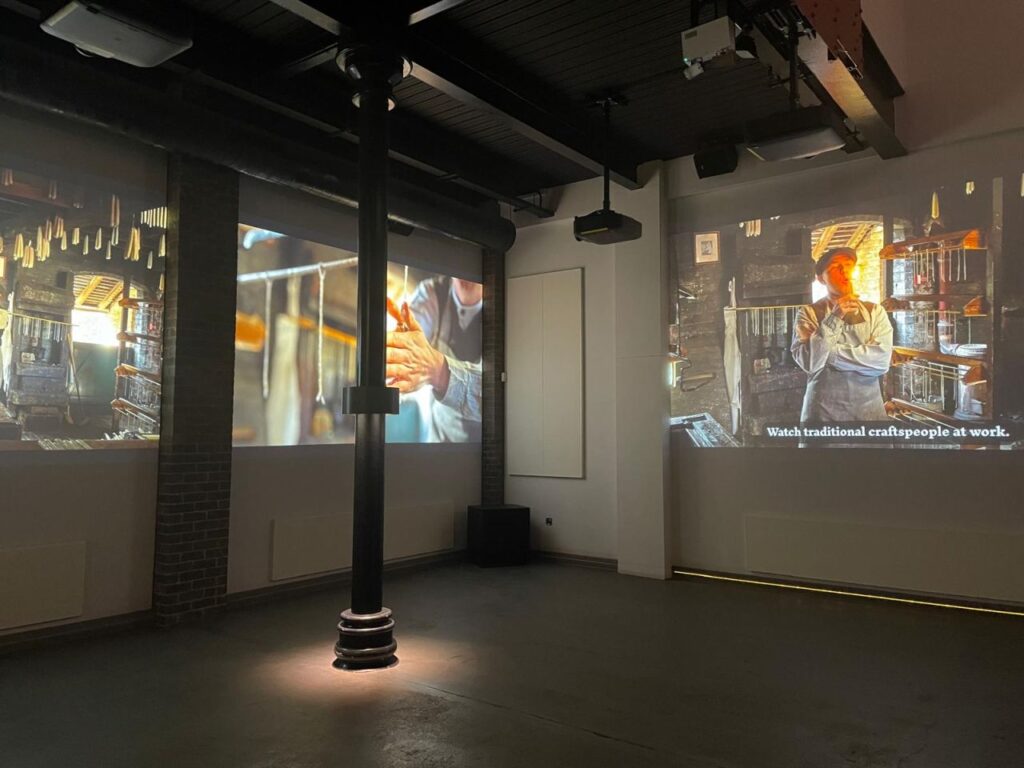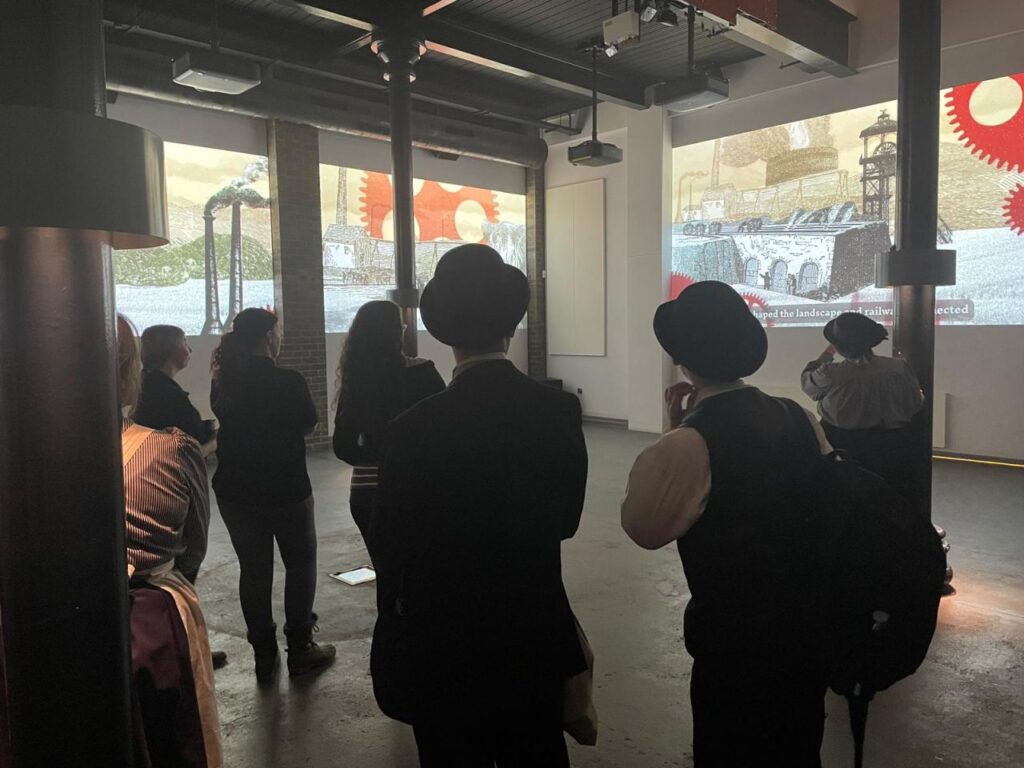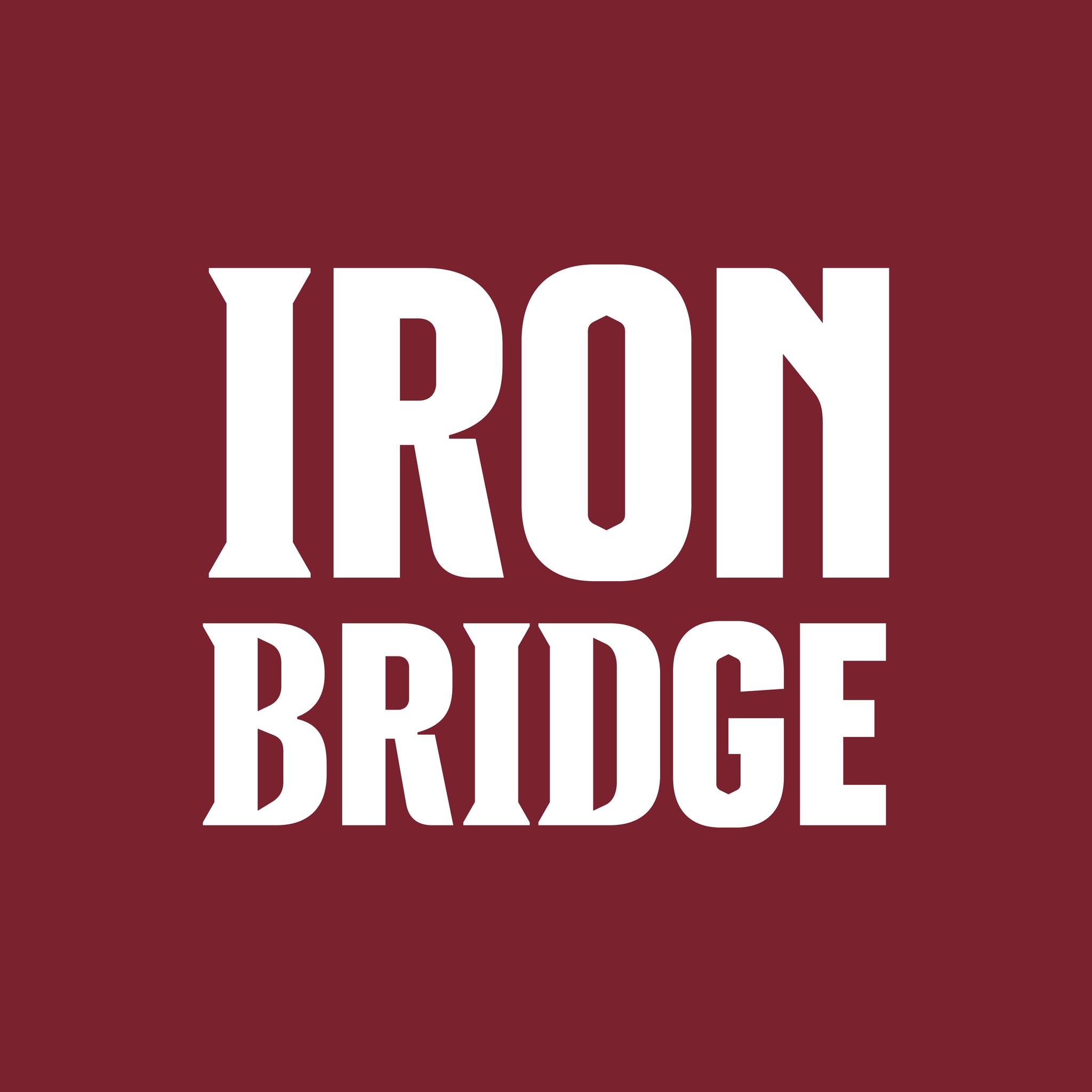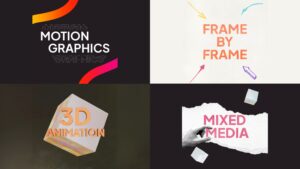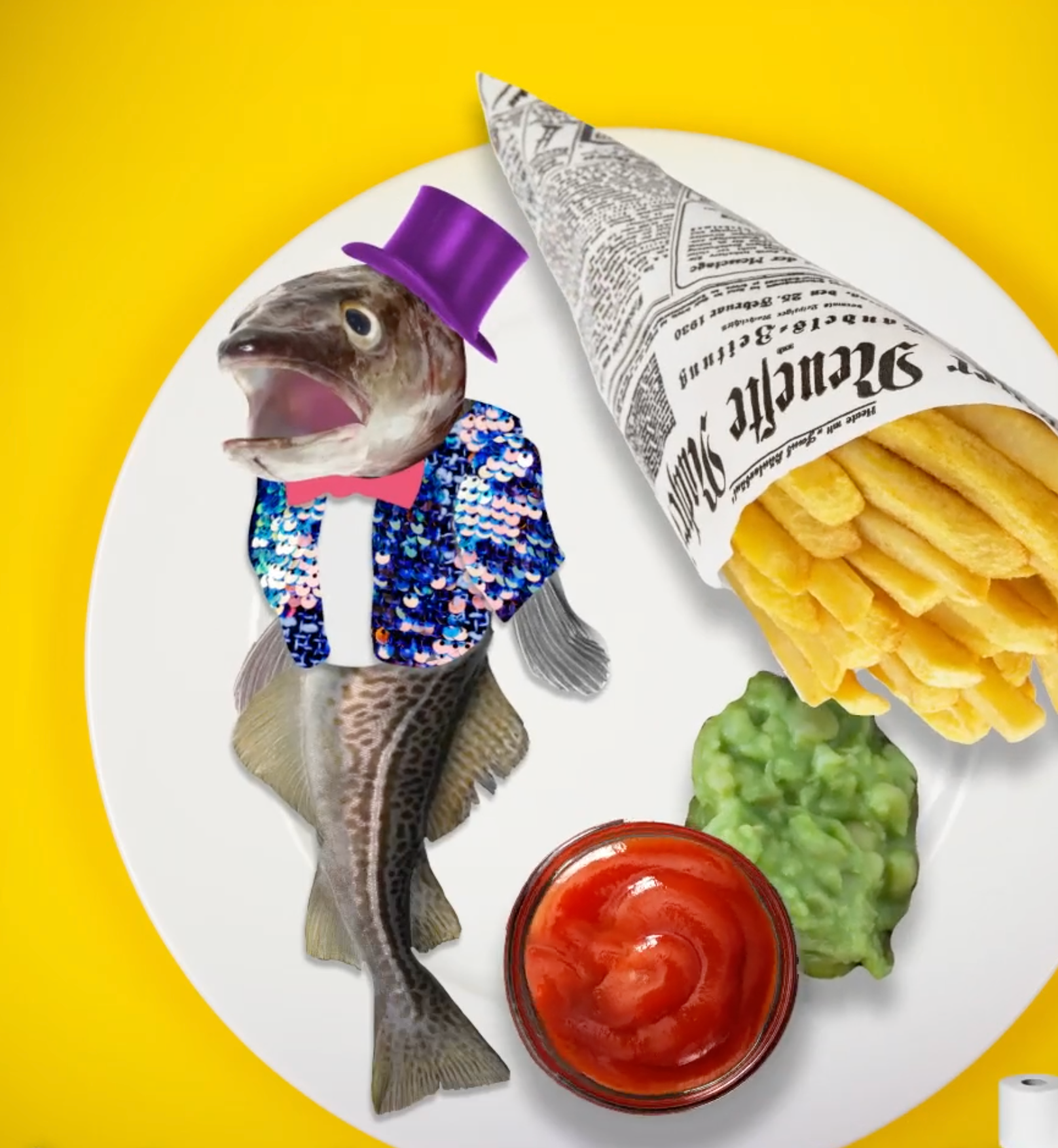Spark Media Video Production Agency
Behind the Scenes:
Ironbridge Visitor Experience Film
- Rebecca Snoad
Date Published: 22/07/2025
Ironbridge Gorge Museum Trust asked us to create a new introductory audio-visual production to be displayed on a loop across 3 large screens at the entrance of their Blists Hill Victorian Town museum site in Shropshire.
The Brief
The aim of this campaign was to get people ready for what they’re about to experience without spoiling it – just enough to build interest and give a feel for the museum before they walk in.
Our job was to tell the story of an East Shropshire Coalfield town in the 1900s so that viewers, especially those visiting the museum for the first time, feel they understand the setting of the museum and appreciate the significance of the history and communities they are about to experience.
The content we created recreates the sights and sounds of Victorian life. Our story introduces the main industries that helped towns like this grow, including ironmaking, mining, brickmaking, and clay working, making sure to emphasise how this local history connects to a bigger global story.
This blog will explore some of the techniques we used to tell this story.
Archive Photo Parallax Effect
This film was projected across 3 large screens at the museum site entrance. To tell the story, our team used a combination of live action footage and animation.
We collaborated with the team at Ironbridge Gorge Museum Trust to explore their extensive archive of historical photos and artworks, from which we reviewed and selected the best materials to help tell the story. We applied a parallax effect to 17 of these images to give a sense of depth and forward movement. This helped create a smoother flow from one part of the film to the next.
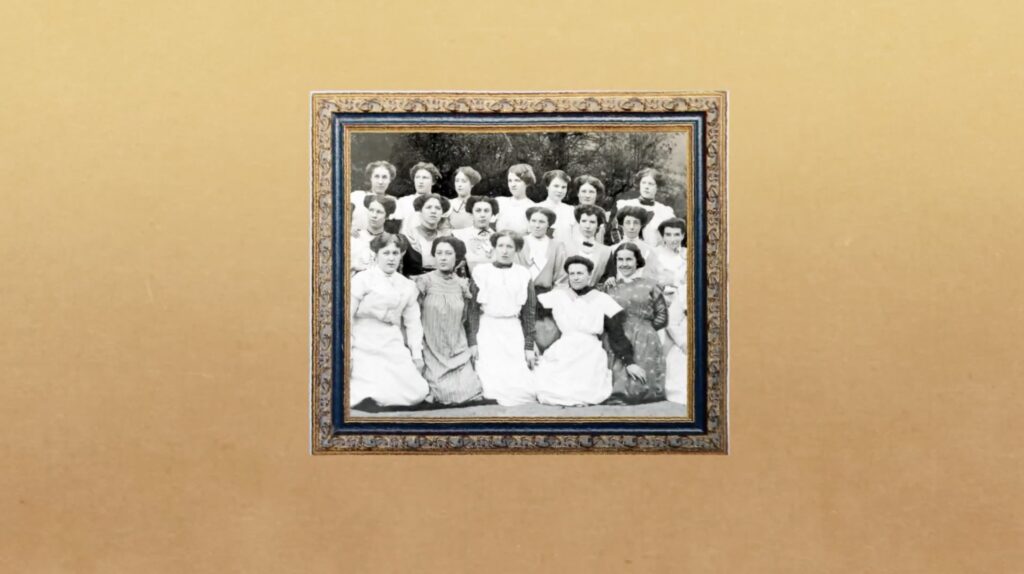
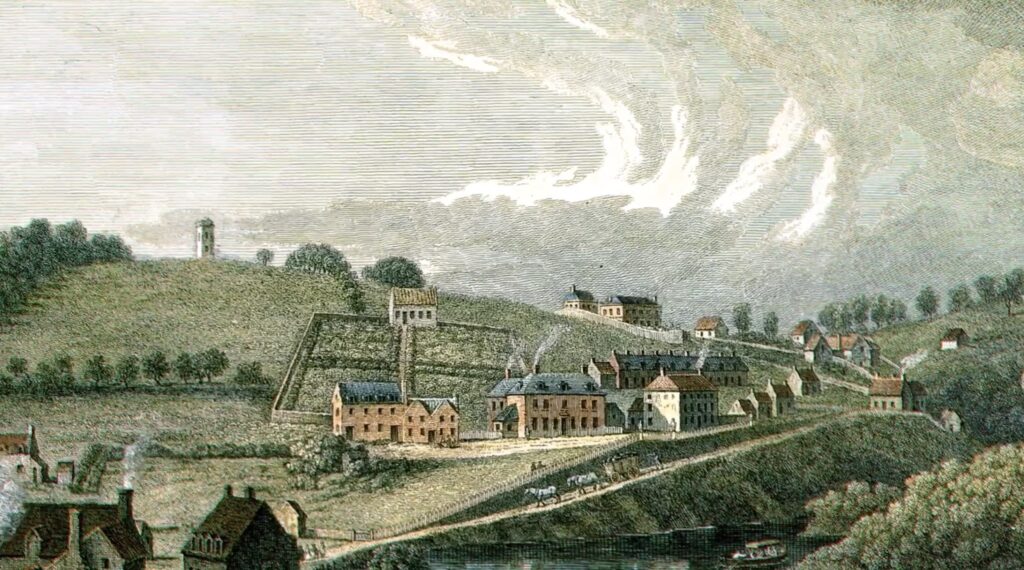
Frame by Frame Animation
Our animation team also created 24 original illustrated characters, based on people who would have lived and worked in the East Shropshire Coalfield around 1900. We researched the clothing, tools, and trades of the time to make sure these felt grounded in real history. The final illustrations were designed using colours from the museum’s brand guidelines. The animation of these characters was done frame by frame to create a hand-drawn style with a slightly rough, textured finish.
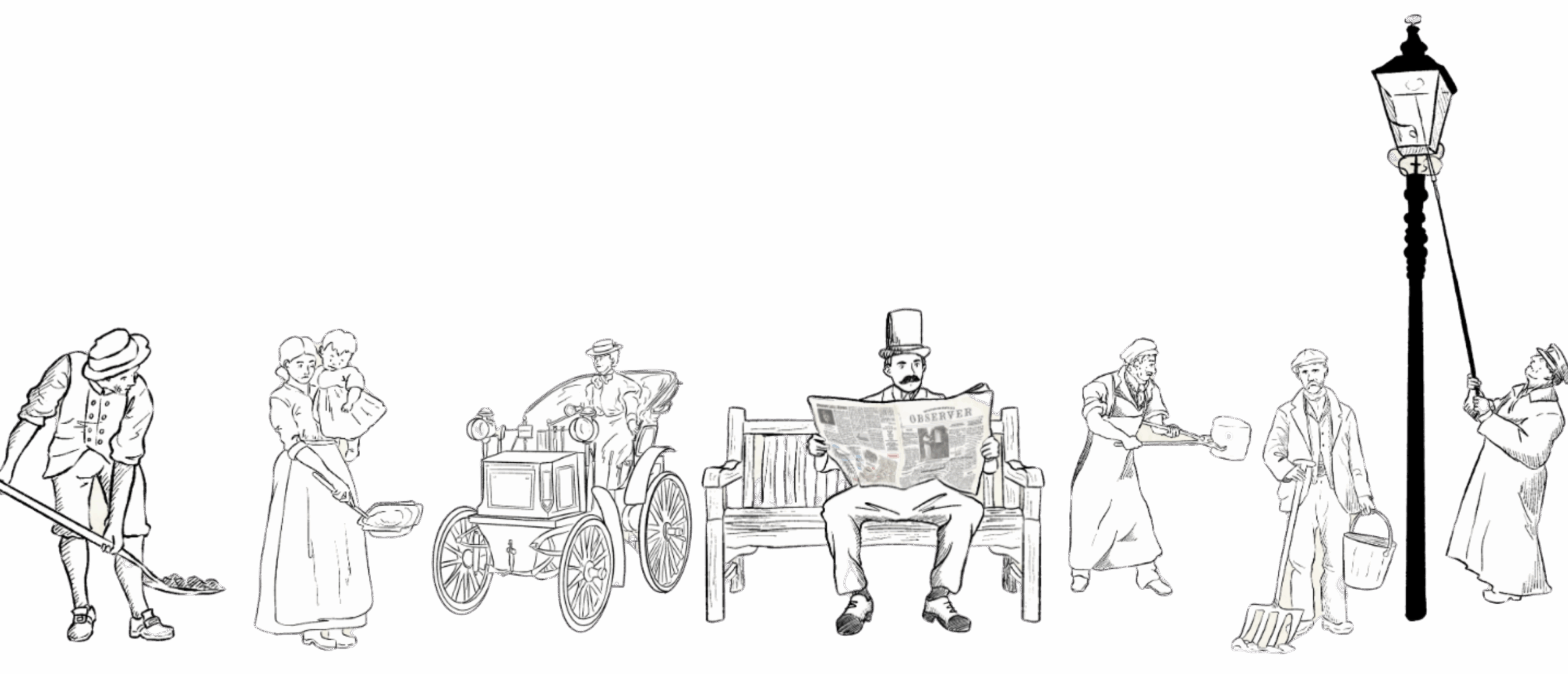
Collage Style Animation
The film uses a collage style to combine the different components. In addition to the archive images and character illustrations, we incorporated cut-outs of stock assets, such as iron machinery and industrial objects. We experimented with a range of textures, including paper and fabric, to give the film a tactile, handmade, and storybook quality.
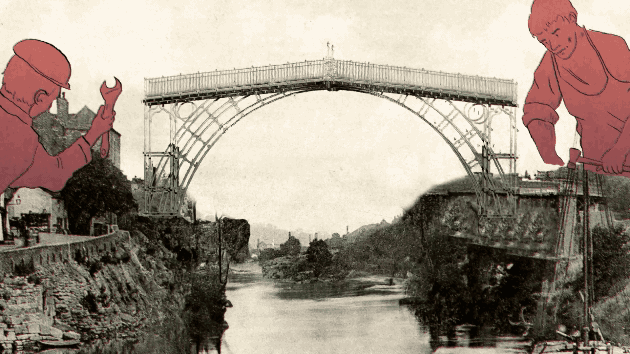
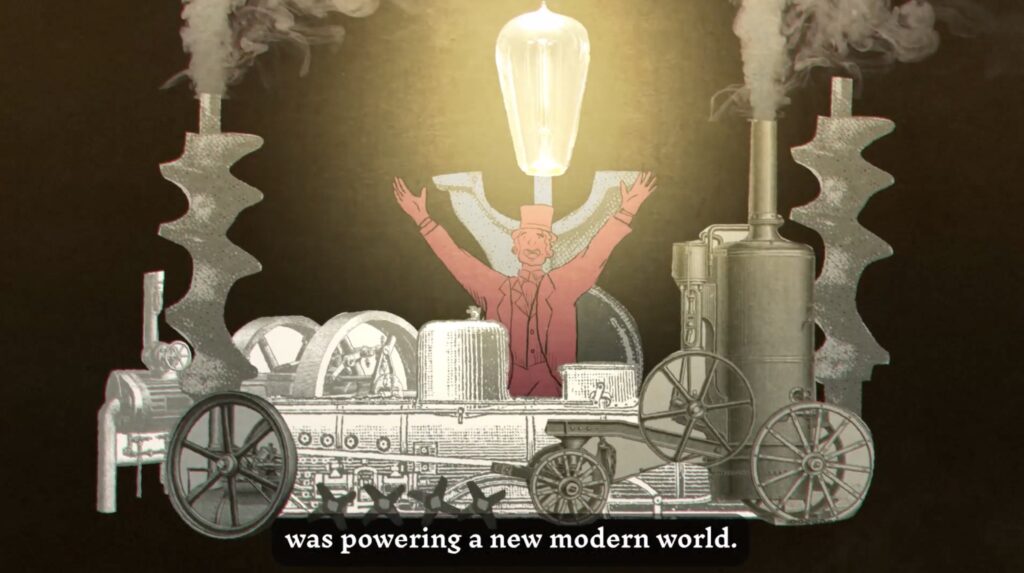
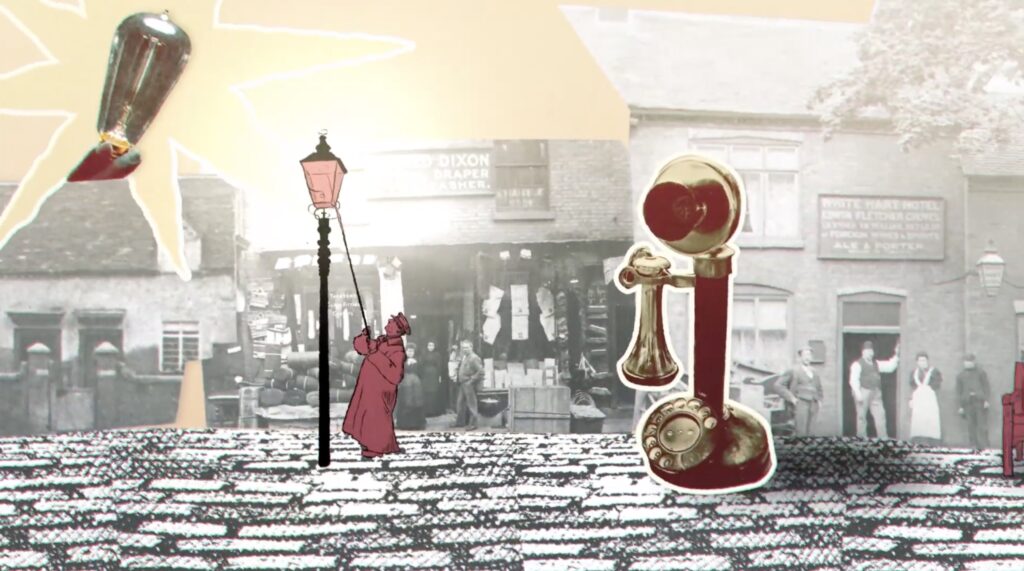
Live Action Filming
We also shot live action footage of performers, who play various roles in the town like a police officer or candlestick maker. We auditioned and then recorded voice overs with some of the Ironbridge team, who recited short monologues of typical workers or residents from that period in time. This also added a local voice to the film and helped connect the historical content with the people who work there today.
We also reused some hero shots from the museum’s TV advertising campaign, which we had produced for them last summer. This helped keep the look and feel consistent across their different marketing materials. We used the same voiceover actor, whose delivery has a calm, steady quality that works so well for storytelling. We made sure to include subtitles to ensure the experience is accessible to everyone.
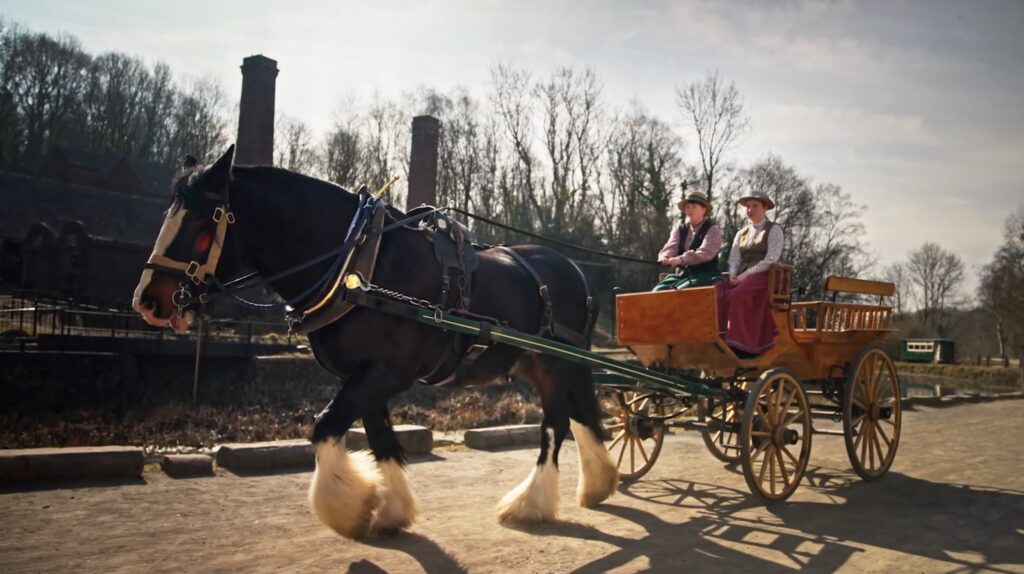
FPV Drone Filming
To introduce the site itself, our in-house Drone Pilot flew our FPV (first-person-view) drone around the area to film a continuous route into and around the museum grounds. This helped us establish a strong sense of place, show the layout of the site, and give visitors a sense of what to expect.
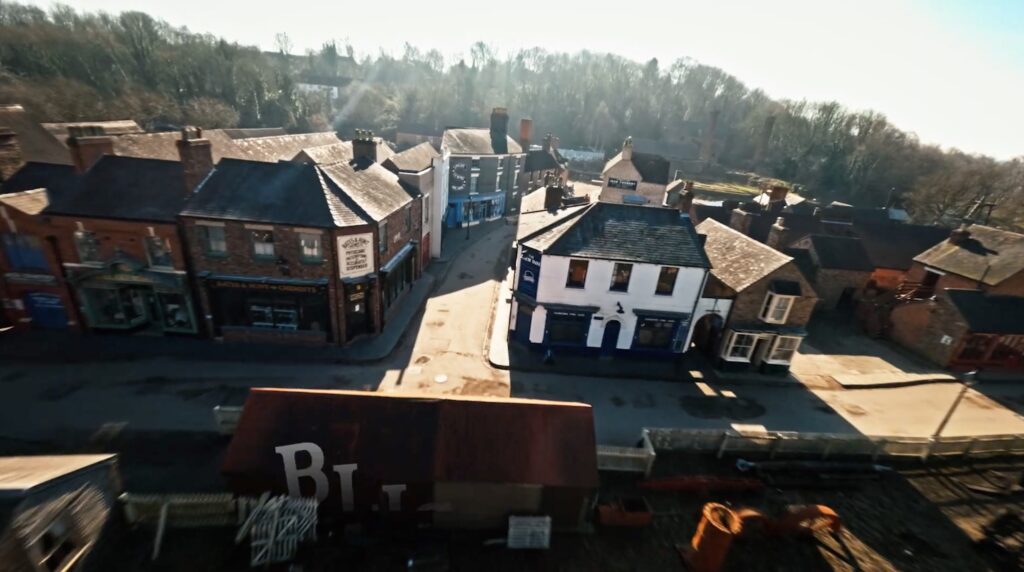
Sound Design
Our Editor carefully worked on the sound design, building 17 layers of audio and adding 68 sound effects, including church bells, train sounds, birdsong and more, in order to create a detailed and convincing environment. With the video projected on three surrounding screens, the goal was to make the viewer feel fully immersed in the story, and sound design played a key role in making that possible.
Optimising for 3 Screens
Each of the three projector screens operated independently, with content created specifically for what was shown on each one. Screen 3 was the main screen and screens 1 and 2 were secondary. We also planned and timed certain elements, such as a steam train, to move across the 3 screens. This approach helped immerse the viewer in the experience and encouraged them to look around and engage with the full space.

The Impact
The audio-visual production we created for the Ironbridge Museum Trust got a great reaction from both visitors and staff. This project was also recognised as a finalist in the Best Storytelling category for the Midlands Marketing Awards.
